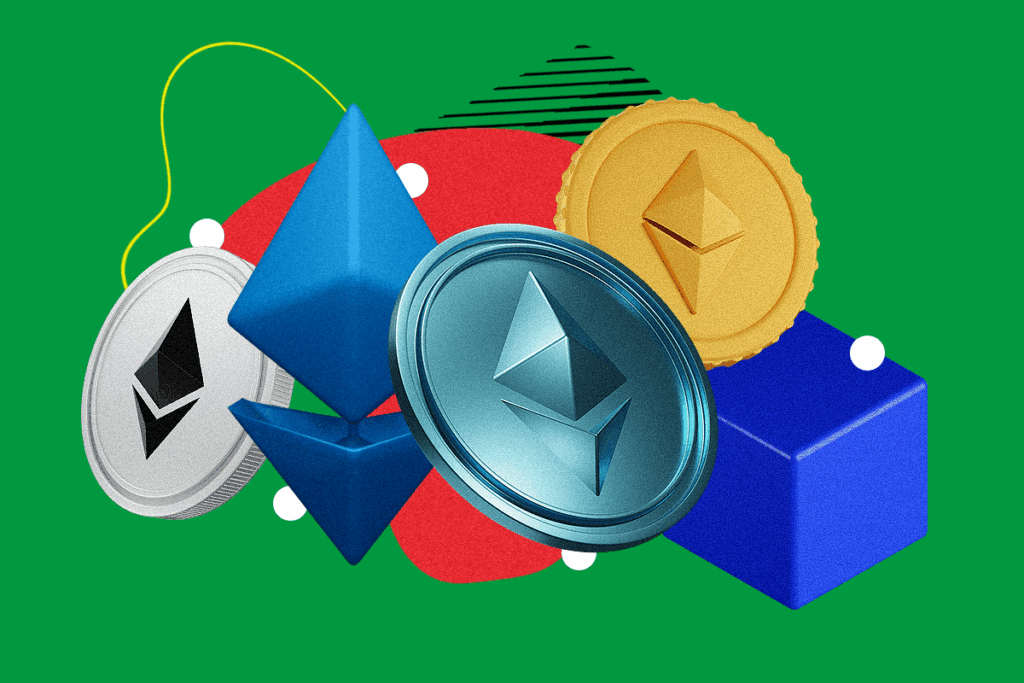Blockchain of Babel: Every ERC Token Standard You Should Know About
Ethereum has a lot of different token standards and most users don’t know what most of them are. This ERC token standards guide should help.

If you’ve been around the Ethereum blockchain for long enough, you’ve probably heard of ERC-20. This is a common token standard that all DeFi users interact with, but few know what it means. Another standard you may have come across is the ERC-721 standard, especially if you’re into NFTs. But what exactly is the difference between them? And are there more of them?
The widely adopted ERC-20 standard is far from perfect because these tokens … can’t be recovered if accidentally lost.
Well, the answer is an unequivocal yes—there are tons of ERC token standards on Ethereum and way too many to be covered in one article. So, let’s start with the most common Ethereum token standards and work our way down to the cooler more innovative ones as well as a few that could potentially gain traction in the future.
What are Ethereum token standards?
Ethereum token standards are the technical guidelines for assets created on the blockchain. Every token on Ethereum—excluding ETH—follows an Ethereum request for comment (ERC) standard that provides specifications and contract standards for tokens.
Creating new types of tokens requires network protocol changes called Ethereum improvement proposals (EIP). While each ERC token standard has different use cases and functionalities, most Ethereum tokens fall into one of a few common categories.
ERC-20
The most common Ethereum token standard is ERC-20, which is the one used by practically every fungible token on the Ethereum blockchain. All tokens are created and tracked using smart contracts and ERC-20 token contracts are used to mint tokens with a technical standard that features just a few functions. ERC-20 tokens can only be sent or received by Ethereum addresses, but you can also approve a third-party account to spend them on your behalf. ERC-20s can represent any fungible commodity or asset that’s either real or virtual.
The ERC-20 token standard is quintessential to the Ethereum ecosystem because it allows for the deployment of custom tokens including stablecoins like Tether’s USDT, exchange tokens like FTX’s FTT token, metaverse currencies like Decentraland MANA, scaling solution tokens like Polygon MATIC, and DeFi protocol tokens like AAVE. ERC-20 token balances and total supplies are easily tracked on the blockchain, but the problem with them is that there’s no loss prevention measure for ERC-20 tokens sent to the wrong address by mistake.
ERC-721
The top Ethereum token standard for non-fungible tokens (NFT) is the ERC-721 standard. This standard is used to create one-of-a-kind indivisible tokens that usually represent a distinct asset. ERC-721 tokens can denote generative digital art, profile pictures, virtual accessories, metaverse land plots, bottles of whiskey, or any other online or offline assets that can’t be copied or split up. This standard is the best for issuing things like concert tickets or certificates of authenticity on the blockchain.
What makes each ERC-721 token special is a unique value called a token ID, which will be different for every NFT even if they’re from the same smart contract. Token IDs can serve as an identifier for the underlying asset which the token represents, be it virtual apparel for a video game, a decentralized web domain, a license to a song, or a bottle of Macallan Scotch. One problem with ERC-721 tokens is that they’re not optimized to work with other token standards.
ERC-1155
The ERC-1155 token standard was created to address the limitations of both ERC-20 and ERC-721 tokens. Mainly, these two token standards aren’t interchangeable and can’t be utilized in the same transaction or smart contract. This means these tokens are more expensive to transact with and can be easily lost if mishandled. That’s why ERC-1155 aimed to optimize the functionality of both standards while consolidating them into a single standard.
An ERC-1155 smart contract can deploy both fungible and non-fungible tokens and enables both token types to be used in the same transactions. This means that Ethereum transactions can bundle different token types together to make them cheaper and more efficient. This standard also has a hook feature that prevents tokens from getting lost by being sent to the wrong contract address. ERC-1155 tokens will be useful for metaverse gaming applications that use multiple fungible and non-fungible tokens.
ERC-20 extensions
As mentioned, the widely adopted ERC-20 standard is far from perfect because these tokens are incompatible with other standards, are inefficient to transact with, and can’t be recovered if accidentally lost. That’s why several token standards have been proposed as an alternative to ERC-20 to address its shortcomings. These three token standards were made to serve as an optimization upgrade to the ERC-20 standard.
ERC-223
If an ERC-20 token gets sent to the wrong smart contract address, the tokens will get stuck because the contract won’t recognize the tokens. This has resulted in millions of dollars of ERC-20 tokens getting lost because they weren’t rejected by the smart contract and can’t be recovered. ERC-223 tokens fix this bug by only allowing tokens to be sent to a smart contract that explicitly approves deposits of a specific token.
This improvement means that tokens can only be successfully sent to smart contracts that are made to work with that token. So if you send a token to the wrong smart contract, then it will be rejected and the assets are reverted to your wallet. Transacting with ERC-223 tokens is also more efficient because deposits don’t need to be approved, which cuts out an extra step required for ERC-20 transactions.
ERC-777
Another standard that similarly tackles this issue is ERC-777. This standard prevents tokens from getting stuck by using hooks, which are specific smart contract functions for accepting or rejecting tokens. Just like ERC-223, ERC-777 prevents tokens from getting lost and allows tokens to be approved and transferred with a single transaction.
In addition to these optimizations, what makes an ERC-777 token contract superior is that it’s backward compatible with the ERC-20 standard. This means that ERC-777 gives us all the same benefits as ERC-223 without being completely incompatible with the older ERC-20 token standard. However, ERC-777 must also compete for adoption against new token standards that address the issues of ERC-20.
ERC-827
Another backward compatible alternative to the ERC-20 token standard is ERC-827. This standard innovates by allowing holders to transmit data in addition to values. This means that users will not only be able to transfer and receive tokens, but the tokens can also have utility without being transacted with. For example, a virtual shopping cart at a Web3 shop will be able to check that you have enough tokens to pay before letting you check out. The ERC-827 standard could be popular for tokens used at NFT marketplaces.
Other ERC standards
Many EIPs focus on implementing improvements to the ERC-20 standard, but this is not true for all of them. Some proposals offer up token standards with features that are fundamentally different because they’re made with unique functions and intended use cases. Here are a couple of ERC standards that could bring new types of tokens to Ethereum.
ERC-1337
The ERC-1337 standard proposes tokens made specifically for recurring transactions. ERC-1337 tokens are meant to be a token designed for subscription models, which means signing a transaction that authorizes a recurring transfer of tokens. This would make it easier to build a web3 subscription model to monetize products, services, or online content. The recurring payment model of the ERC-1337 standard could open up new ways to do business on the blockchain.
ERC-4626
ERC-4626 aims to establish a set of unified parameters for yield-bearing vaults. Put simply, this standard makes it easier to deploy staking contracts on Ethereum with a more structured way to maintain and interact with token vaults. For instance, if a DeFi protocol wants you to stake tokens it must issue to stakers an ERC-721 token to keep track of their balances.
The problem is that designing a staking system can get messy since each protocol must implement its own system for tracking staking deposits.
ERC-4626 makes it easier to develop staking systems for DeFi protocols because it provides a uniform standard for creating and managing token staking vaults. This provides a quicker alternative for developing DeFi staking mechanisms since this standard is compatible with ERC-20 and doesn’t require additional resources to design or implement.
